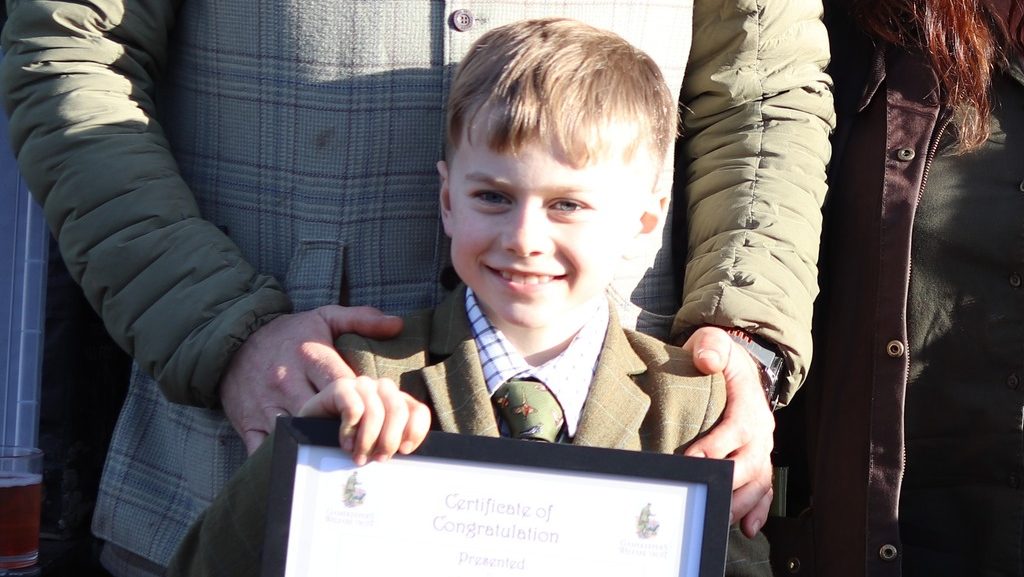Win CENS ProFlex DX5 earplugs worth £1,149 – enter here
Pigeon shooting: Decoying over laid cereals
Pigeon shooting: Decoying over laid cereals: In the blink of an eye we’ve gone from looking forward to the spring drillings to being on the brink of pigeons turning their greedy beaks to laid cereals.
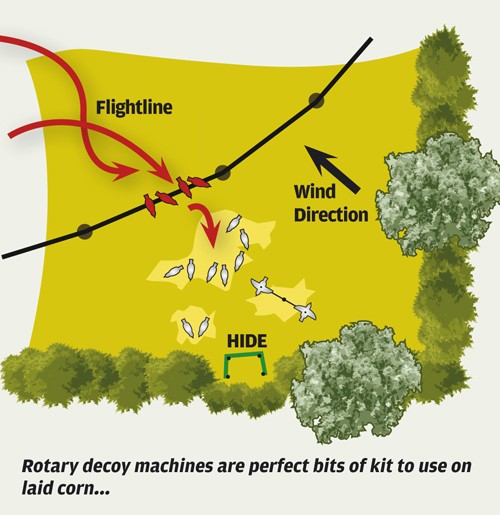
In a normal season, winter-sown barley will be the first crop to begin to ripen, followed by oilseed rape, then winter wheat, and finally the spring-sown cereals.
But this has not been a normal season, certainly not in my part of Essex anyway.
At least 40% of the fields did not get sown in the autumn, being muddled in early in the Spring, with the result that there are some very sorry looking crops about.
You might ask what this farming bulletin has got to do with the average pigeon shooter but, as always, the man who can predict where pigeons are likely to concentrate their feeding habits is the one most likely to kill big bags.
In this instance, thin crops are unlikely to fall over after heavy rain, meaning, quite simply, the birds cannot get at the ears of grain.
What happens when the farmer applies nitrogen to the growing plants is that in any areas that get a double dose – headlands, awkward corners and the like – the stalks cannot support the extra growth, so they collapse.
Also omitting to spray the fields with growth regulator results in the plants going over after heavy rain.
FLAT OUT
The upshot of all this, is that there are not going to be as many fields of laid corn as usual, maybe none at all.
This can be a good thing, of course, because if there is only one field down in a large area, every woody in creation will be making a beeline for it.
Not that standing crops prevent pigeons from feeding on them, over the past few summers, I have witnessed pigeons fluttering over wheat and plucking the ears whilst in flight.
Last year, for the first time, I saw birds actually settling on standing corn with their wings outstretched, to prevent them falling through the stalks!
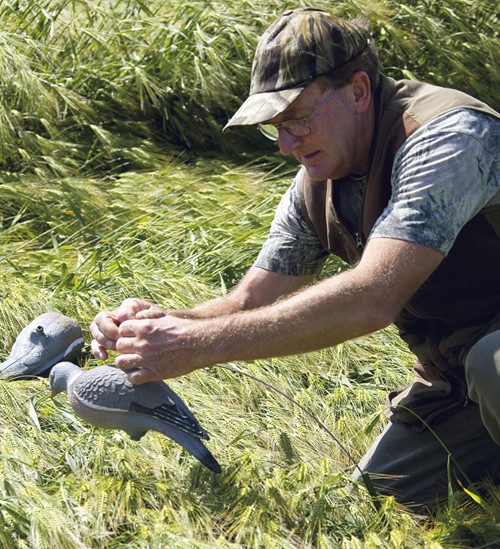
So let’s assume you’ve got a field with a few laid patches scattered here and there.
What’s the best way to tackle the pigeons that are beginning to take an interest?
For reasons that have never been explained to me, farmers seldom worry about pigeons devouring large quantities of ripening grain, hardly ever deploying gas guns or rope bangers.
They will pull their hair out in apoplectic rage if a pigeon dares set foot on the winter rape, but are content to turn a blind eye when three ounces of wheat disappears down every pigeons throat every day.
This means, as a decoyer, that we can usually allow the numbers using a field to build up – the prerequisite to making a large bag.
Reconnaissance should show what part of the field the birds prefer, assuming there is more than one patch from which to choose.
Pigeons will always go for a field that has telephone wires crossing it, again, assuming they are spoilt for choice, they appear to love sitting along the wires, watching until their mates nosedive into the crop.
Provided you are careful not to shoot into the wires, the pole supporting them is a great place to set up shop.

As I mentioned earlier, the laid patches are likely to be round the headlands, in handy range of surrounding hedgerows, but I have no hesitation in setting up midfield if that’s where the birds are feeding.
You can usually follow a tramline to reach these areas, so minimising any damage you might do walking through the crop.
The next problem to tackle is getting your decoys above the crop, so that flighting pigeons can see them.
They have a poor sense of perspective, so raising the decoys a foot above the stalks on canes will work very well.
Obviously, laid corn was made for the rotary machine and battery powered flappers, the constant fluttering and spinning, exactly what incoming birds expect to see.
Usual rules apply, keeping the whirly well upwind of the main body of decoys.
Don’t be too fussed about the shape of any pattern, motorway, comma, L-shaped, or whatever as pigeons will just be happy to get down into the crop, sometimes cramming shoulder-to-shoulder if the area is small.
DROPPING BIRDS
I hate not being able to pick up shot birds, but wading about in standing crops looking for the slain is not the best way to endear yourself to the farmer.
So whenever possible I’ll try to drop them on the laid patches.
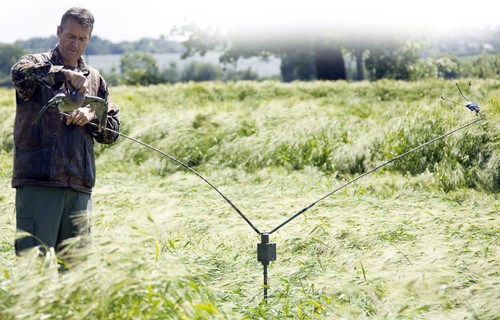
This is not as difficult as it may sound, particularly if you let the first bird right in, dropping it amongst the decoys, and refraining from firing at birds that are obviously flying over standing areas.
Clearly, if you can choose a large flat patch on which to set up the chances of a better pickup are greatly increased.
One of the most irritating bugbears of summer pigeon shooting is trying to keep the flies off shot birds, an almost impossible task.
I have tried most little tricks over the years, like putting them under a piece of damp hessian, or covering them with clumps of fresh grass, but the only sure-fire solution is to painstakingly pull the eggs off by hand at the end of the day.
COOL OFF PERIOD
If you are not taking the bag to the game dealer immediately, it’s essential that you cool the birds down as soon as you get home.
I find the best way to do this is to lay them out on a cold concrete floor.
Don’t be tempted to pile them straight into a freezer more than two deep whilst the bodies retain any heat.
The feathers will insulate the birds from the cold, meaning any fly-blows will still hatch out in the freezer.
I can assure you that it is not a pretty sight when you come to empty the freezer three months later! To sum up, expect winter-sown barley to be the first to go down.
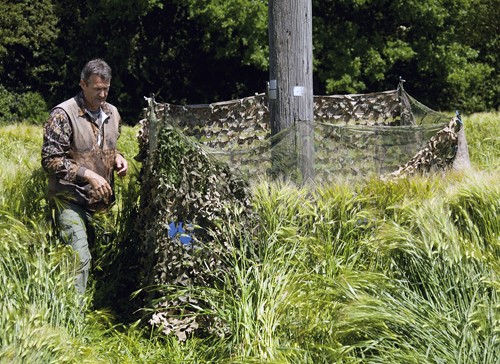
I always check any fields on my patch the day after any thunderstorms, just to see what damage has been done.
Allow the birds to get really ‘fixed’ on a given field before hitting them, usually expecting to make a start about midday, later if the weather is particularly hot.
As the grains harden, pigeons will switch to winter wheat or rape stubbles, whichever becomes available first.
If no laid patches occur, keep an eye on any winter wheat fields that have been heavily sprayed with growth regulator, your experience telling you which fields are likely to be the birds favourite.
Related Articles
Get the latest news delivered direct to your door
Subscribe to Shooting Times & Country
Discover the ultimate companion for field sports enthusiasts with Shooting Times & Country Magazine, the UK’s leading weekly publication that has been at the forefront of shooting culture since 1882. Subscribers gain access to expert tips, comprehensive gear reviews, seasonal advice and a vibrant community of like-minded shooters.
Save on shop price when you subscribe with weekly issues featuring in-depth articles on gundog training, exclusive member offers and access to the digital back issue library. A Shooting Times & Country subscription is more than a magazine, don’t just read about the countryside; immerse yourself in its most authoritative and engaging publication.



